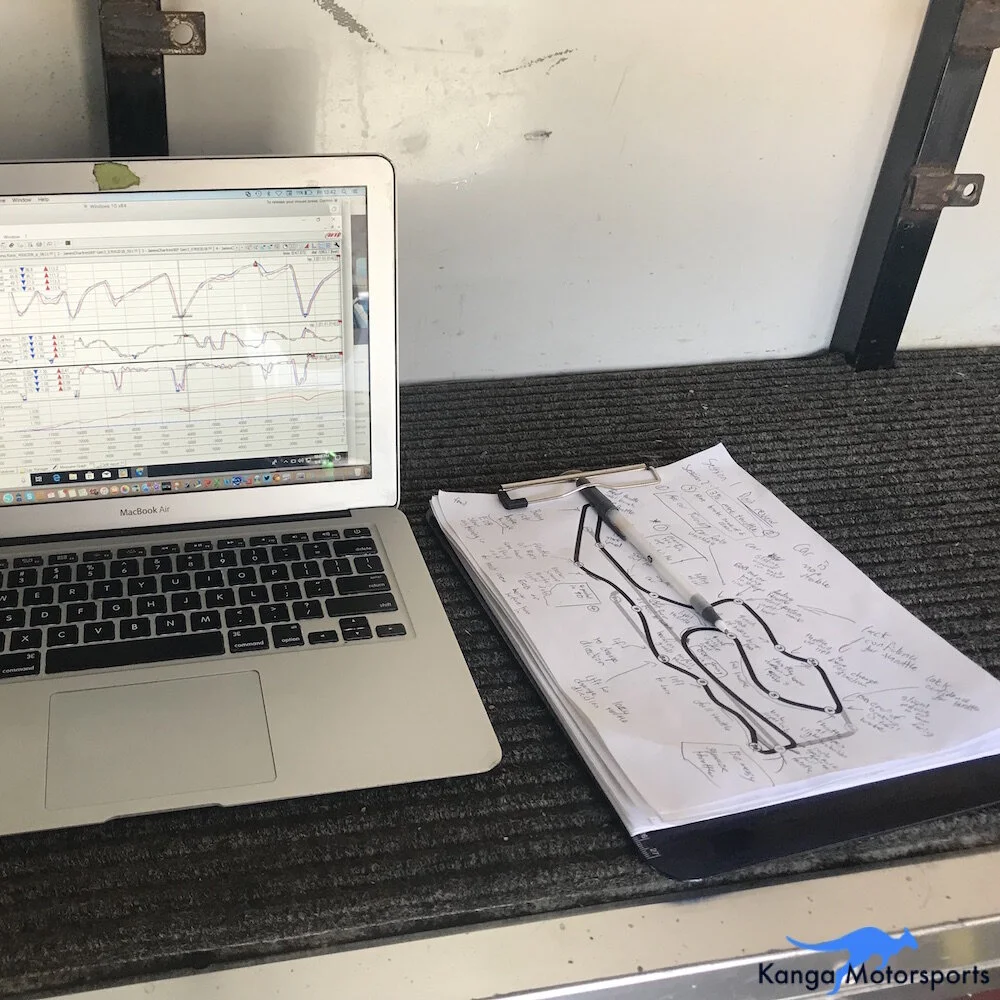Whether you are doing Track Days, High Performance Driving Events (HPDE), Test Days, Budget Endurance or Road Racing at some point you are likely going to come up on a car you need to pass. In Spec Racer Ford our cars are all identical in terms of performance so we really have to work at passes we can’t just blow by on the straights with more horse power. Here are some tips to help your race craft and get more passes done.
Driving Right Behind
If you are stuck right behind the car in front you are forced to brake and accelerate whenever they do. This doesn’t let you work out where you are faster and you get stuck driving their performance level. Try staying 1 to 2 car lengths back and this will reveal which corners you brake later and where you get to full throttle earlier. Then you can set the other driver up for the pass in the identified areas over the next few laps.
Avoid Dive Bombs
When many drivers start out they try to pass everywhere and anywhere on the track. This can lead to causing both the lead and following driver to be slowed down or worse an on track incident. A very common type of pass is the dramatic dive bomb ending in contact or cars having to take evasive action off track. We have all made stupid low chance moves when starting out myself included. So just pause and think and don’t do it! Divebombs are a fast way to become unpopular with your fellow racers, trackside staff and the stewards. Instead wait a couple of turns or a lap to see where you are faster and can safely and cleanly make a pass. You will likely find a braking zone or corner exit where you are faster and can set up your passing move. When making the passing move make sure to present yourself and get alongside before the turn in point that way the other driver knows you are there.
Practice Driving Offline
As we discussed in our “Rubbing is NOT Racing” article, incidents often occur because a driver wasn’t comfortable driving off the racing line. Take a session or two on a quiet test day (when no one else is around you) and try driving offline as if a car is next to you and you are setting up for a pass. Drive the inside and outside line to get a good feel for grip levels and where you can place your car safely.
Identify the Passing Corners
There are many ways to drive a track and it is no coincidence that most passes take place at hair pins or a series of complex turns. The corners with greatest speed differential such as hairpins are great passing areas as they reward effective braking and getting back to full throttle early. Next time you are heading to the track, pull out the track map and study it to determine which corners might make for great passing opportunities. Then confirm on your next on track session. If you can safely and cleanly out brake your competition and use a different line to get to full throttle early, you now have a great place to pass your competition.
Not only does this work for hairpins and heavy braking zones but often there are a series off connected corners that can be driven a few different ways. In qualifying you might give up the first few corners to get a better exit on the last corner but during the race you might be able to use a different line through the first few series of corners to carry more speed and get a pass done.
Capitalize On Mistakes
Often the easiest way to make a pass in road racing is to put pressure on your competitor and capitalize when they make a mistake. This advice is not appropriate for Track Days, High Performance Driving Events (HPDE) and Test Days, please do NOT pressure drivers during these types of events. Drivers often make mistakes when there is another car chasing them. Starring in their mirrors all over the track is a telltale sign they are worried about you behind them and not as focused on their own performance. Give them a few corners or laps and they will likely make mistake. Common mistakes include locking up the brakes, overshooting a corner or early apex that results in them running wide. The key thing is to be close enough to capitalize on their mistakes. Watch what they are doing but focus on your references, so you will be able to take appropriate action. If you are just following their cues for braking and turn in points you might just make the same mistake.
Getting the Passes Done
So what are the ways you can improve your passing:
Drive your own references
Wait and follow your competition for a few corners or laps to determine their weakness
Follow 1 to 2 car lengths back to reveal where your performance is better
Use the track map to determine the natural passing corners
Confirm the passing corners in a test session
Use a quiet test session to practice driving off the racing line when no one else is around
Present yourself and be alongside before the turn in point
For Wheel to Wheel racing only, apply pressure to your opponents and be ready to capitalize on their mistakes
If all else fails you can always use The Force.















Want to be faster at the track? We share our tips and tricks on reviewing your videos and improving your lap times.